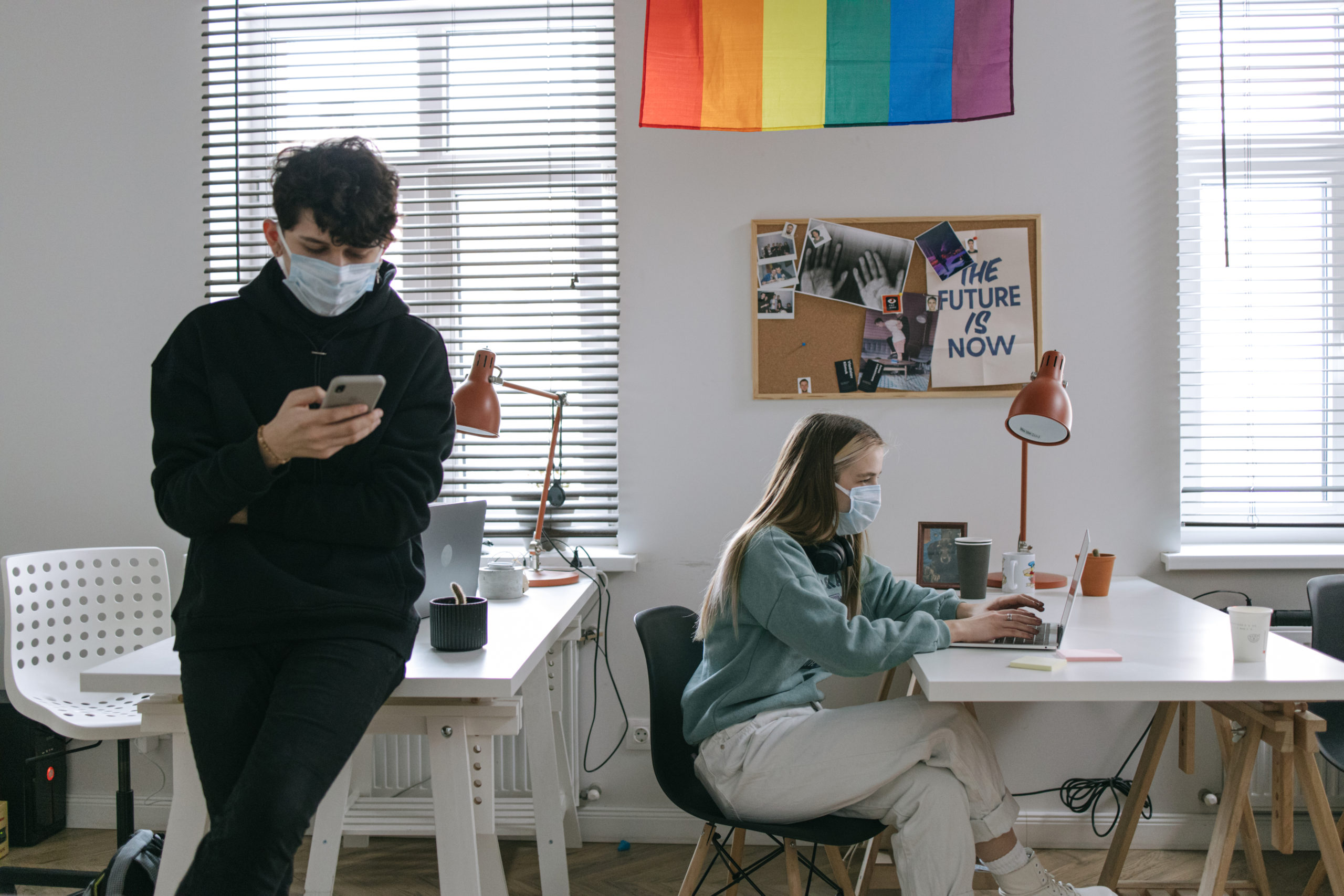After many weeks from the protected isolation of the home office and back to the office, many people fluctuate between relief and uncertainty. Finally seeing our colleagues again – but can we keep a sufficient distance? Offices have to change to comply with the new rules. With a few simple means, you can ensure that you and your colleagues are protected as well as possible.
Shielding instead of open space
The more modern a company is, the more difficult it can be to avoid the risk of infection. Large open areas without fixed spaces, but with spots where people come together and exchange ideas – this was how modern work looked before Corona. Now, however, distance is required. Above all, open-plan and open-plan offices have to be converted for this. The most efficient means are partitions .
What is reminiscent of cubicles from old TV series is absolutely contemporary from a medical point of view: Wherever it would be difficult to keep your distance, work cubicles can be divided up. Even in meeting rooms, only small groups can now come together. In order to connect many participants with one another, teams must therefore still have access to telephone and video.
Take “clean desks” literally
Of course, the office cannot work without disinfectants either. Employers should make this available in sufficient quantities. Not only so that employees thoroughly clean their hands, but also tables, telephone receivers, keyboards, and other objects that they often touch. For proper hand hygiene, toilets must also be equipped – preferably with a reminder on how handwashing prevents infections.
A closable bin is recommended for the rubbish in the office, so that, for example, tissues are not lying around openly. In addition, employers should establish cleaning schedules. For closed rooms, a regular exchange of air also prevents droplet infections. Therefore, ventilation should be carried out as often as possible; a fan may ensure the necessary exchange of air. Check out these Staples office supplies for your office.
Go new ways
A distance of one and a half meters is comparatively easy to maintain in queues or around the desk. It becomes difficult to keep the distance while moving. So that nobody accidentally comes too close to a colleague in the corridor, it is worthwhile using a guidance system that marks paths on the floor as “one-way streets”. Simply taped off, it can also be identified which door is used as an entrance and which as an exit or how much distance has to be kept from other people, elevators and counters.
Plan breaks
Everyday office life also includes exchanging ideas over a coffee and eating together. However, especially in canteens or coffee kitchens, there should be no large gatherings at peak times. Here it is worthwhile to allocate time slots or to divide the workforce into groups that take breaks one after the other. Disinfectants and distance markings also help in canteens and kitchens.
Snack machines and coffee points should replace open dishes with items that are packaged or locked in boxes and, for example, store fruit in separate containers. When refrigerators are shared, compartments provide a better overview and fewer contacts.
Take care
Actually, it shouldn’t be new: Those who work together are considerate of each other. That doesn’t just mean helping colleagues and greeting them in a friendly manner. Now it is also important to be sensitive to their worries and to protect others through careful behavior – including, of course, by wearing face-to-face masks. Employers can provide disposable products or branded everyday masks that also create a visual sense of community.
You will of course find everything for this new working environment at Viking. We are happy to help and give tips on how to make your office a safe space for employees.
This is a Contributor Post. Opinions expressed here are opinions of the Contributor. Influencive does not endorse or review brands mentioned; does not and cannot investigate relationships with brands, products, and people mentioned and is up to the Contributor to disclose. Contributors, amongst other accounts and articles may be professional fee-based.

